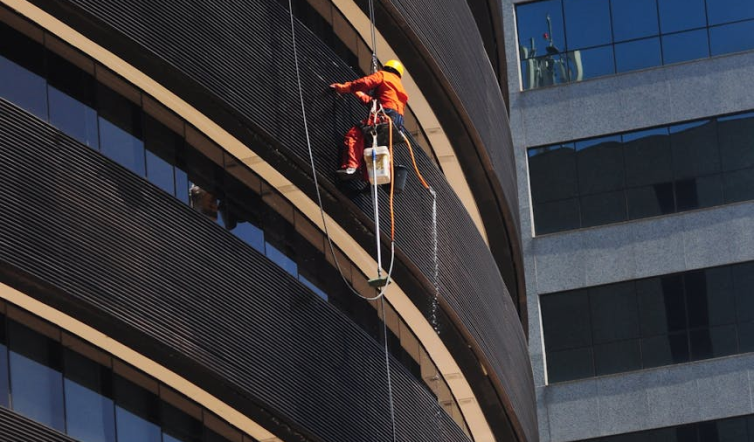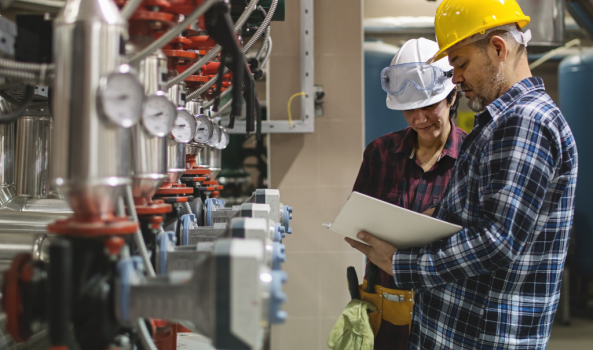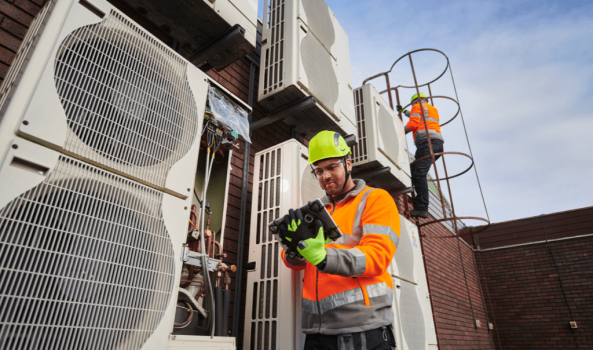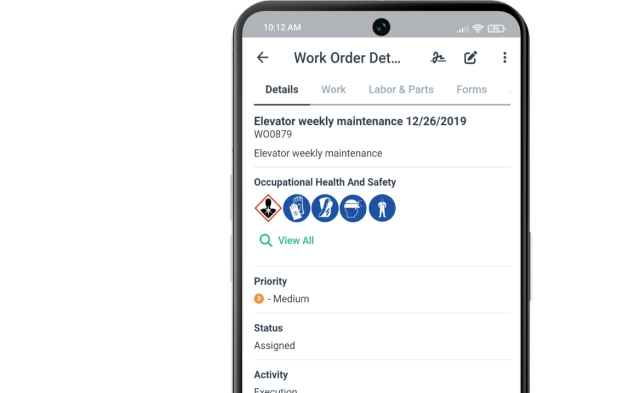Get a Free WorkTrek Demo
Let's show you how WorkTrek can help you optimize your maintenance operation.
Try for freeKey Takeaways
- Aging equipment is the #1 concern for 67% of maintenance managers, with 80% of manufacturing plants citing machinery breakdowns as their leading cause of operational inefficiencies
- Fortune Global 500 companies lose $1.4 trillion annually due to unplanned downtime, with costs reaching $9,000 per minute for large organizations
- Only 29% of facility managers believe their technicians are adequately prepared for modern maintenance challenges, highlighting a critical skills gap
- Modern CMMS solutions can reduce emergency calls by 50% or more through preventive maintenance scheduling and real-time communication
Maintenance management faces an increasingly complex landscape.
From aging equipment to skilled labor shortages, organizations struggle with multiple challenges that directly impact their operational efficiency and bottom line.
Understanding these obstacles—and more importantly, knowing how to overcome them—can mean the difference between reactive firefighting and proactive excellence.
Recent data shows that 67% of managers believe aging equipment represents their main future challenge, while 34% cite lack of resources or staff as a critical concern.
These statistics paint a clear picture: maintenance teams need clear and strategic solutions now more than ever.
This article covers the eight most significant challenges facing maintenance management today, with practical suggestions on how to improve operations.
1. Managing Aging Equipment and Asset Deterioration
Aging equipment stands as the number one concern for maintenance managers worldwide.
A recent study found that 80% of manufacturing plants cite machinery breakdowns as their leading cause of operational inefficiencies.
Outdated equipment can greatly impacts maintenance.
As a facility manager, you already know that old equipment doesn’t just break down more often, but it can create a cascading effect of maintenance issues.
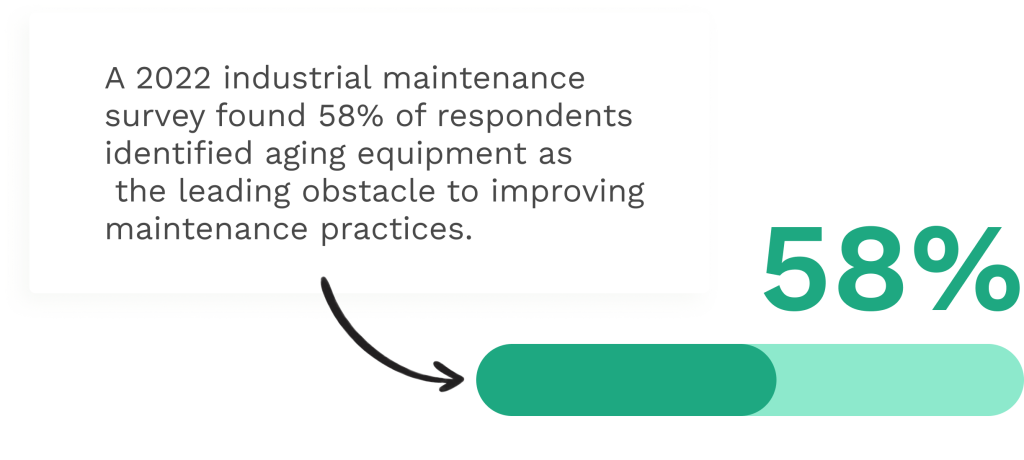
One issue faced by maintenance teams is that legacy systems require specialized knowledge that’s increasingly hard to find.
Additionally, spare parts become scarce and expensive, and equipment failures happen with frustrating regularity.
The challenge can intensify when you consider that many facilities operate with equipment decades past its intended lifecycle.
The financial implications are staggering. Fortune Global 500 companies experience an annual total of $1.4 trillion in losses due to unplanned downtime disruptions—that’s roughly equivalent to Spain’s entire annual GDP.
For individual organizations, these frequent repairs and increased operational costs from aging assets can quickly spiral out of control.
There are a few strategies that innovative maintenance teams use to address this challenge:
Asset lifecycle management
Can becomes a critical cornerstone of your maintenance strategy. Rather than running equipment to failure, professional facility managers implement comprehensive tracking systems that monitor equipment health. They can also predict replacement needs and justify capital expenditures using complex systems and repair data.
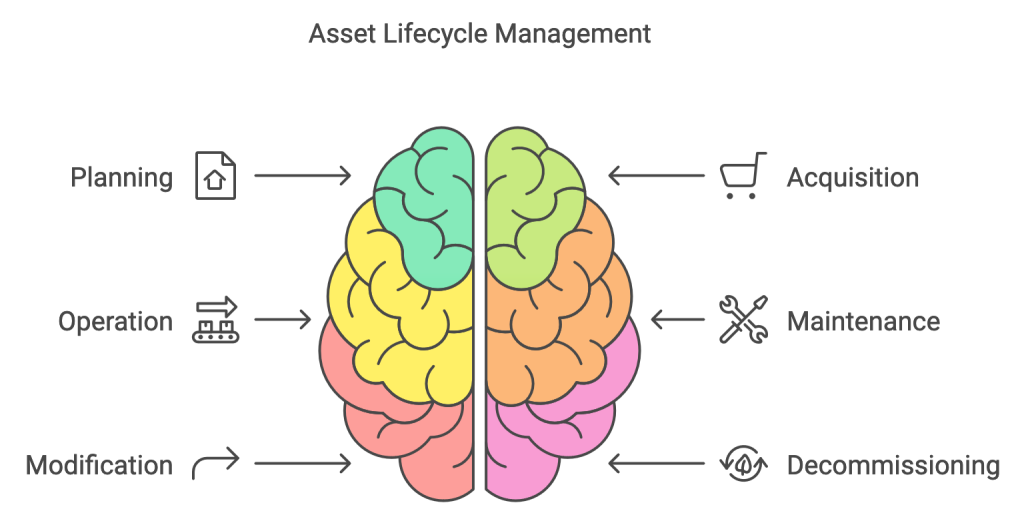
This proactive maintenance approach helps minimize downtime while building a case for strategic equipment upgrades.
Predictive maintenance technologies
Predictive maintenance is another option. By implementing IoT sensors and data analysis tools, maintenance personnel can detect early warning signs of equipment failure.
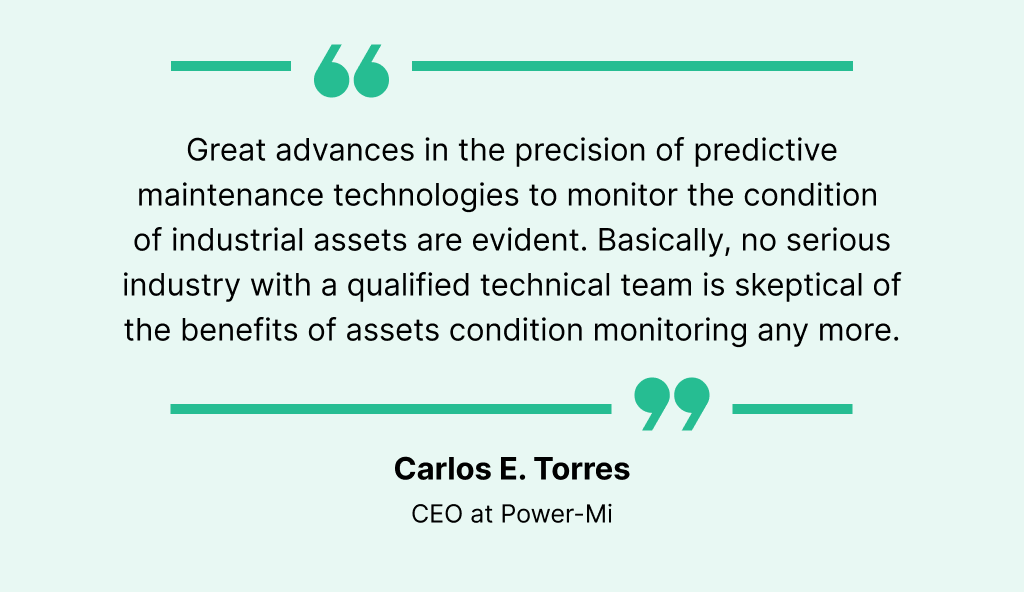
Anytime you move from reactive maintenance to predictive maintenance, you can extend equipment life while reducing the associated costs of emergency repairs.
Strategic replacement planning
Replacement planning helps facilities management teams balance financial constraints with operational needs.
Instead of replacing everything at once, create a phased approach that prioritizes critical assets first, ensuring continuous improvement without overwhelming your budget.
2. Skilled Labor Shortages and Knowledge Transfer
There is a quiet storm brewing in the maintenance industry: experienced technicians are retiring faster than new talent enters the field. This is creating a significant skills gap that threatens operational efficiency.
Only 29% of facility managers believe their technicians are “very prepared” for modern maintenance challenges, while 26% consider them “not at all prepared”.

The problem is multi-pronged – fewer people are getting into the industry, and training is limited in many organizations.
This perfect storm can undermine an organization’s ability to maintain equipment properly, implement new technologies, and ensure safety procedures are followed.
Additionally, when experienced maintenance personnel leave, they take decades of institutional knowledge with them, leaving maintenance teams scrambling to fill the void.
These challenges become even more complex considering how the nature of maintenance work is evolving.
A maintenance manager today needs teams proficient not just in traditional mechanical skills but also in computerized maintenance management systems, data analysis, and increasingly sophisticated diagnostic tools.
Finding individuals who bridge this technical divide proves increasingly difficult.
Here are a few suggestions to help your organization navigate this complex landscape:
Develop a robust training program
Make this part of the foundation of any solution that you implement. Rather than hoping new hires arrive job-ready, successful maintenance teams invest in continuous skill development.
What should these programs covers? Any training program should encompass both technical competencies and soft skills like communication and problem-solving.
Don’t forget to implement an organization-wide documentation process. Having easily accessible standard operating procedures ensures knowledge isn’t lost when key personnel leave.

This can be greatly simplified by implementing a CMMS platform like WorkTrek.
Encourage mentorship

Pair experienced technicians with newer team members, facilitating knowledge transfer before it’s too late. This approach is invaluable in preserving institutional knowledge about specific equipment, unique facility challenges, and proven troubleshooting techniques. Some of this information might be hard to find in vendor manuals.
Adopt Technology
Implementing the right technology platforms can help bridge the gap. A modern maintenance software like WorkTrek can automate a lot of manual work order processes, centralize documentation, and provide detailed KPIs and reports. This ensures completed tasks meet quality standards even when expertise is limited. These systems also capture maintenance history and create a knowledge base that outlasts any individual employee.
3. Budget Constraints and Resource Allocation
Based on our experience, most maintenance organizations operate with limited resources and budgets. This forces facilities managers to do more with less while maintaining safety standards and operational efficiency.
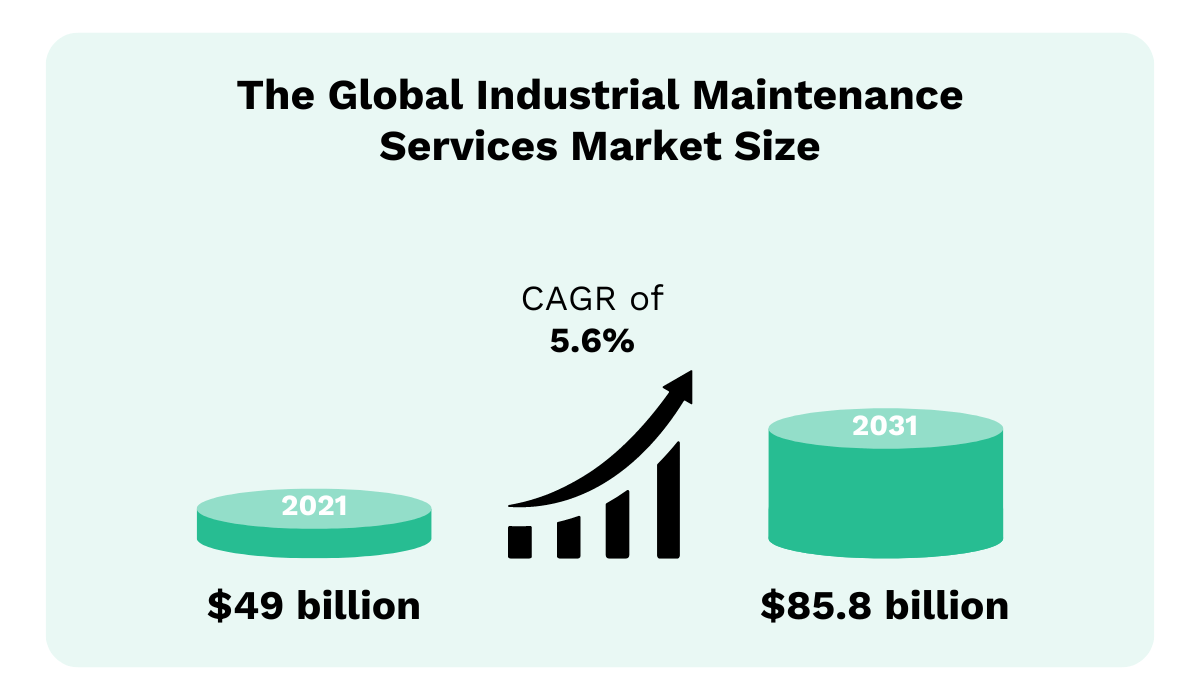
According to recent surveys, 29% of facilities lack adequate budget for maintenance needs, creating a dangerous cycle of deferred maintenance and increased operational costs.
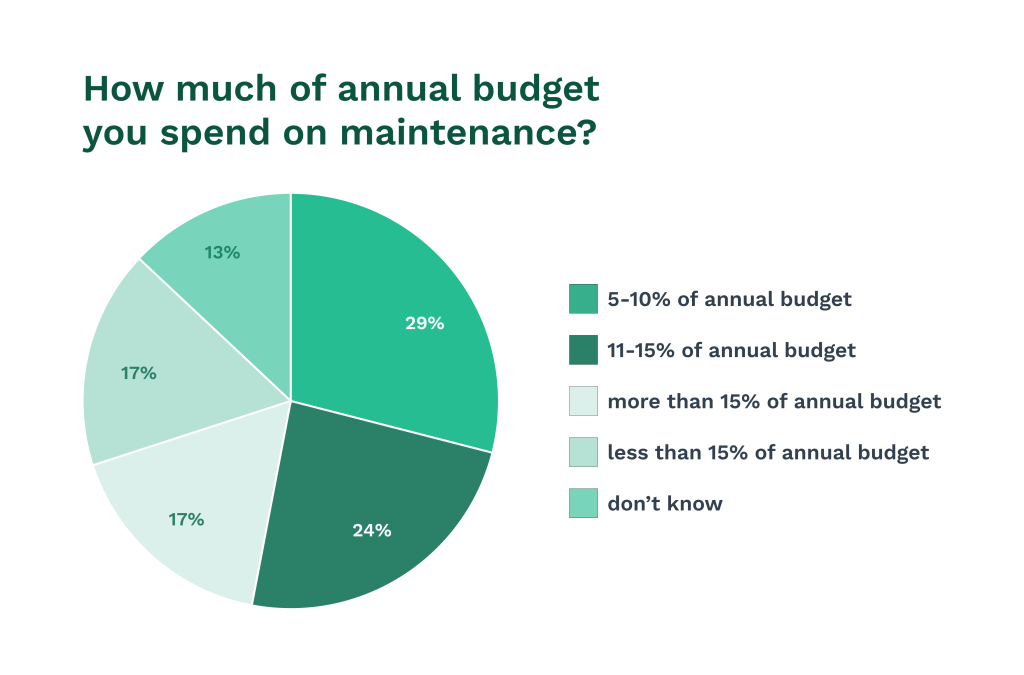
The challenge isn’t always about money, but also about efficient resource allocation.
Maintenance costs can spiral out of control when teams lack proper planning, leading to expensive emergency repairs, overtime labor, and expedited shipping for critical parts.
Without an effective maintenance strategy, organizations find themselves trapped in reactive maintenance cycles that drain budgets without improving reliability.
When dealing with competing priorities, budget pressures can intensify.
Facilities management teams always battle with balancing immediate repairs vs preventive maintenance tasks. This is all the while justifying expenditures to leadership who may not fully understand the long-term cost savings of proactive maintenance practices.
Below are a few tips on how to overcome budget challenges:
Data-driven justification

Transforms maintenance from a cost center to a value driver. By tracking key performance indicators and demonstrating the value of preventive maintenance in reducing operational costs, maintenance managers can build compelling cases for budget increases. Show leadership how every dollar spent on proactive maintenance saves multiple dollars in avoided breakdowns and production losses.
Prioritization frameworks
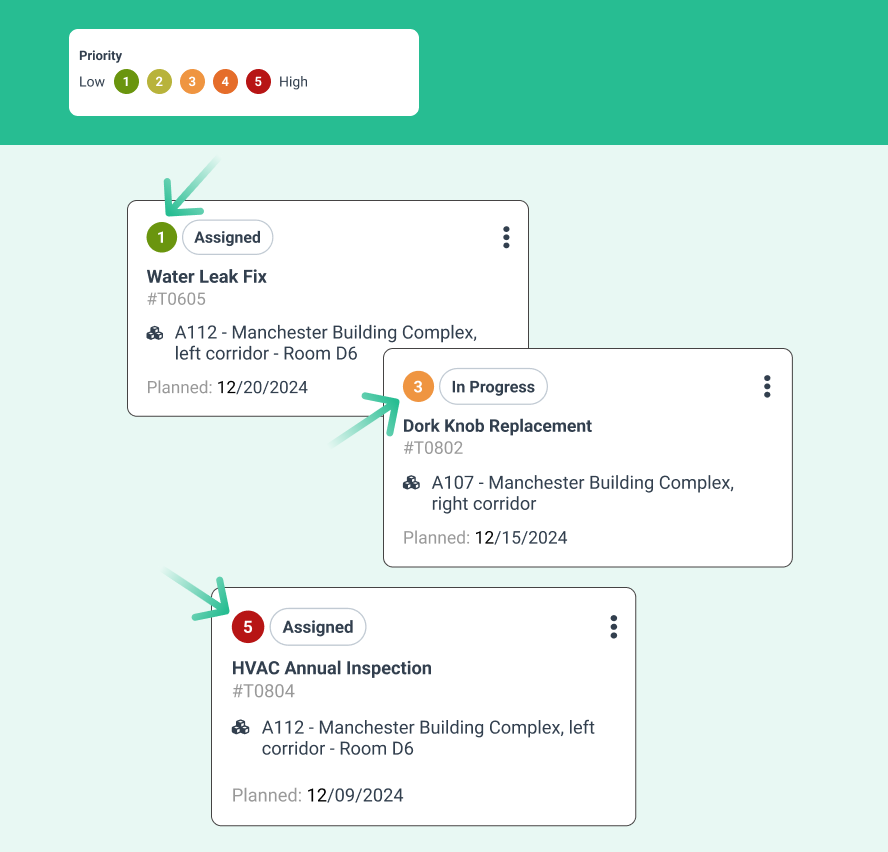
Ensures that limited resources target critical tasks first. Not all maintenance activities should carry equal weight. The key is to focus on equipment that directly impacts production, safety, or customer satisfaction. This approach helps maintenance teams maximize impact even with constrained budgets.
Long-term cost savings strategies
In your discussions with management, shift the conversation from expense to investment. Implementing a preventive maintenance plan might require upfront costs, but the reduction in equipment failures, unplanned downtime, and emergency repairs delivers significant ROI.
4. Managing Unplanned Downtime and Emergency Repairs
Unplanned downtime and emergency maintenance affect 90% of European businesses, making it one of the most persistent maintenance challenges organizations face. The ripple effects can extend far beyond the immediate repair costs. It can result in production halts where customer relationships suffer, and maintenance teams scramble to address issues reactively.

The actual cost of unplanned downtime often shocks leadership. For large organizations, downtime costs can reach as high as $9,000 per minute, with higher-risk industries like healthcare seeing costs soar beyond $5 million per hour. These staggering figures don’t even account for the long-term damage to equipment, team morale, and customer satisfaction that frequent emergencies create.
Emergency maintenance can create a vicious cycle. When maintenance teams constantly fight fires, they lack time for preventive maintenance activities, which leads to more equipment failures and more emergencies.
This reactive approach can exhaust maintenance personnel, strain budgets, and prevent the implementation of improvement initiatives that could break the cycle.
Here are a few ideas on how to better handle emergency repairs:
Implement Preventive Maintenance
This forms the cornerstone of downtime reduction. By establishing regular inspection schedules, routine maintenance tasks, and proactive component replacement, organizations can identify and address issues before they cause failures.
This shift from reactive to preventive maintenance typically reduces emergency calls by 50% or more.
Root Cause Analysis
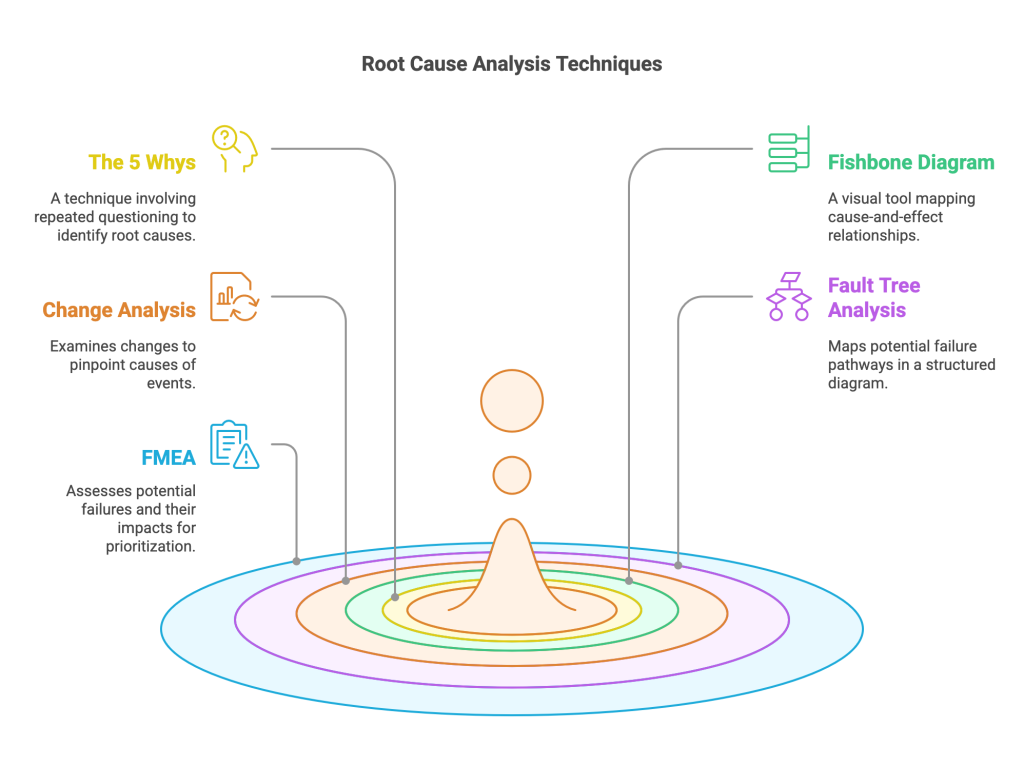
Helps prevent recurring failures. Instead of simply fixing problems, maintenance teams should take steps to understand the root causes of failures. Was it inadequate preventive maintenance? Operator error? Design flaws? By addressing root causes rather than symptoms, organizations can eliminate chronic issues that drive emergency maintenance.
Spare Parts Optimization
Having good visibility into your spare parts inventory can help reduce emergencies and costs. Implementing good inventory management means having critical components on hand without tying up excessive capital in unused parts. Modern maintenance software can predict parts needs based on maintenance history and the importance of equipment, which helps maintain the right balance.
5. Technology Integration and Digital Transformation
Despite the clear benefits of implementing a CMMS platform, many organizations struggle with technology adoption. Recent surveys show 88% of companies struggle with aging IT infrastructure and outdated technology, while 76% face challenges connecting modern assets and analyzing the resulting data.
This technology gap creates significant challenges for maintenance teams trying to improve efficiency.
Implementing technology alone is not enough. Consider integrating any maintenance software with your ERP or other enterprise applications. Facilities that operate with multiple systems without integration can create data silos that prevent comprehensive analysis.
Maintenance managers find themselves juggling disparate platforms for work orders, inventory management, asset tracking, and reporting. This can waste valuable time on manual processes that should be automated.
Legacy systems can compound the challenge. Older equipment often lacks the connectivity needed for modern monitoring solutions, while newer assets generate data volumes that overwhelm traditional maintenance management approaches.
This creates a two-speed maintenance environment where some assets benefit from predictive maintenance while others remain in reactive mode.
Below are a few tips to improve your digital transformation process:
Phased Implementation
Being strategic about implementation can reduce the load on teams. Start with core functionality like work order management, then gradually add features like predictive maintenance and advanced analytics. This approach allows maintenance personnel to adapt and see benefits before moving to the next phase.
Plan Integration Steps
This ensures new systems work with existing infrastructure. Before selecting a computerized maintenance management system, map current systems and identify integration points. Modern facility management software should connect with enterprise resource planning, production systems, and IoT sensors to create a unified maintenance ecosystem.
Change Management
Addresses the human side of technology adoption. Even the best maintenance software fails if teams don’t embrace it. Invest in comprehensive training programs, identify champions within maintenance teams, and demonstrate early wins to build momentum for broader adoption.
6. Regulatory Compliance and Safety Management
It is becoming increasingly complex for maintenance organizations to manage regulatory compliance.
Safety procedures must be followed meticulously, regular safety inspections documented thoroughly, and compliance risks managed proactively—all while maintaining operational efficiency and managing daily maintenance activities.
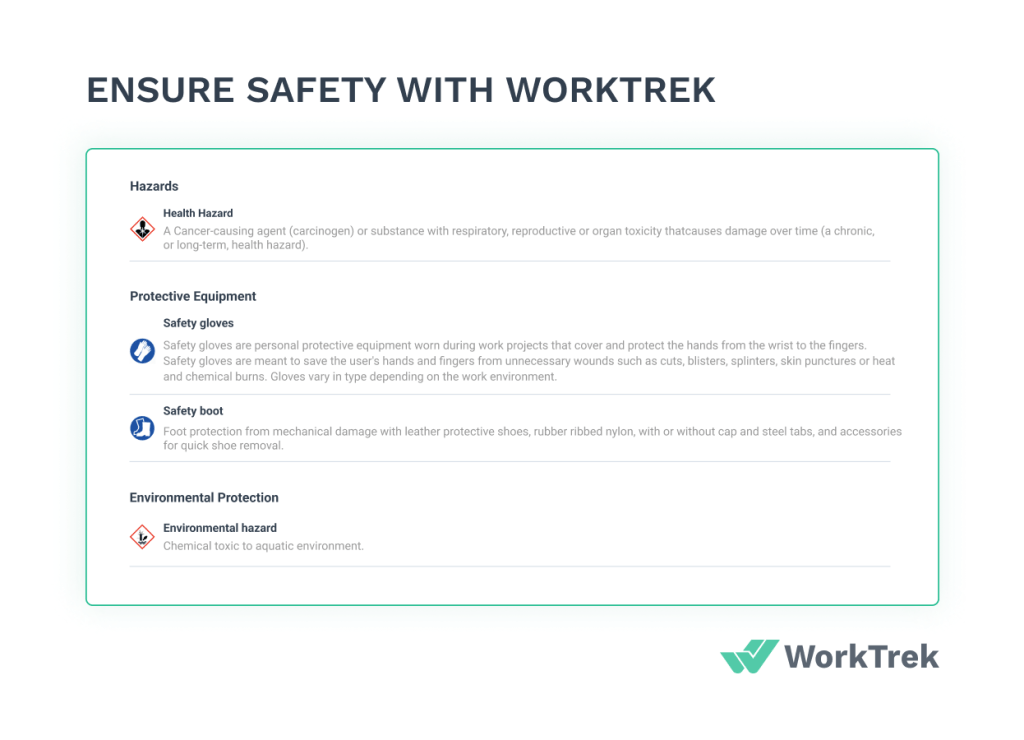
The stakes couldn’t be higher. Safety hazards in maintenance work can lead to serious injuries, hefty fines, and damaged reputations.
Yet many organizations struggle with fragmented safety training programs, inconsistent documentation processes, and difficulty tracking whether safety procedures are followed in the field.
The lack of maintenance history and inspection reports can make it difficult to get to the root cause of safety incidents.
Compliance gets even more complex as regulations evolve and enforcement increases. Facilities and maintenance managers must navigate federal, state, and local requirements while also meeting industry-specific standards.
This regulatory maze becomes even more challenging when managing multiple facilities across different jurisdictions, each with unique compliance requirements.
Below are a few things you can do to improve your organization’s compliance:
Centralized Documentation Systems
Ensure all safety-related maintenance activities are properly recorded and easily accessible during audits. Digital maintenance software can automatically generate inspection reports, track safety training completion, and maintain comprehensive records that demonstrate compliance.

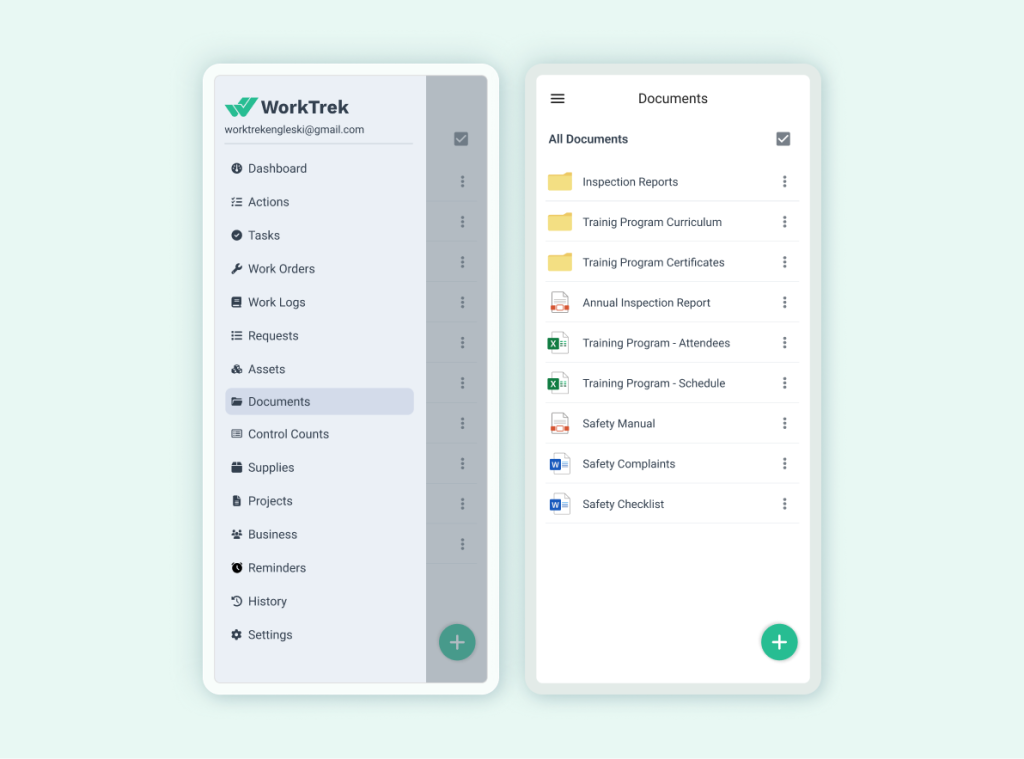
Using this centralized system, you can eliminate the risks associated with paper-based or fragmented documentation.
Standardize Safety Procedures
Implementing and standardizing safety procedures can reduce variation and ensure consistent compliance. Using a CMMS system, you can embed safety checks into work orders and require digital sign-offs. This can help maintenance managers verify that safety protocols are followed every time.
Proactive Safety Training
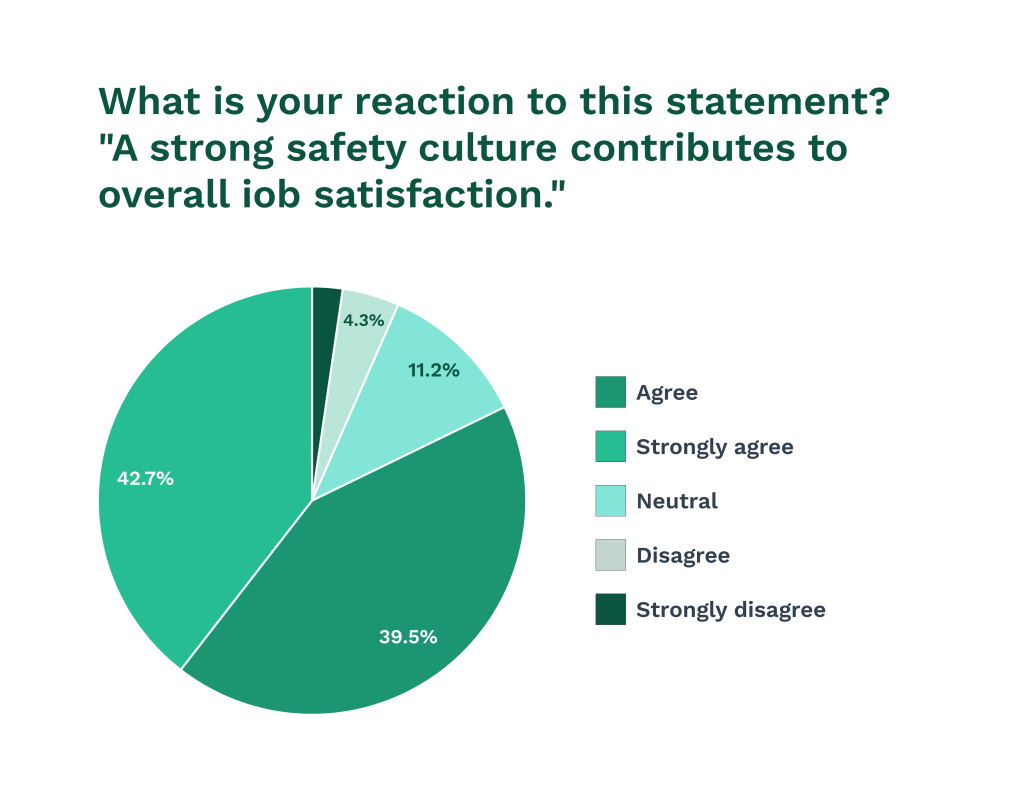
This goes beyond basic compliance and aims to create a culture of safety for your maintenance team. Regular training sessions, safety meetings, and refresher courses keep safety top-of-mind for maintenance personnel. Track training completion and certifications within your maintenance management system to ensure no one performs tasks they’re not qualified for.
7. Poor Communication and Coordination
Communication breakdowns can plague maintenance operations. This can create inefficiencies that ripple throughout organizations.
When maintenance requests get lost, priorities aren’t communicated, or teams work in silos, the result is is frustrated stakeholders. A significant 45% of maintenance professionals‘ working hours are spent managing physical work orders and documentation—time that could be better spent on actual maintenance tasks.
The challenge intensifies in larger organizations where maintenance teams must coordinate with operations, procurement, management, and external contractors. Without effective communication channels, addressing maintenance requests becomes a game of telephone where critical information gets lost or distorted.
This leads to wrong parts being ordered, technicians arriving unprepared for jobs, or critical maintenance being delayed because priorities weren’t properly communicated.
Modern organizations overcome communication challenges through:
Unified Communication Platforms
A CMMS system like WorkTrek can integrate all maintenance-related communication into a single system. It can serve as the central hub where all stakeholders can submit requests, track progress, and access information.
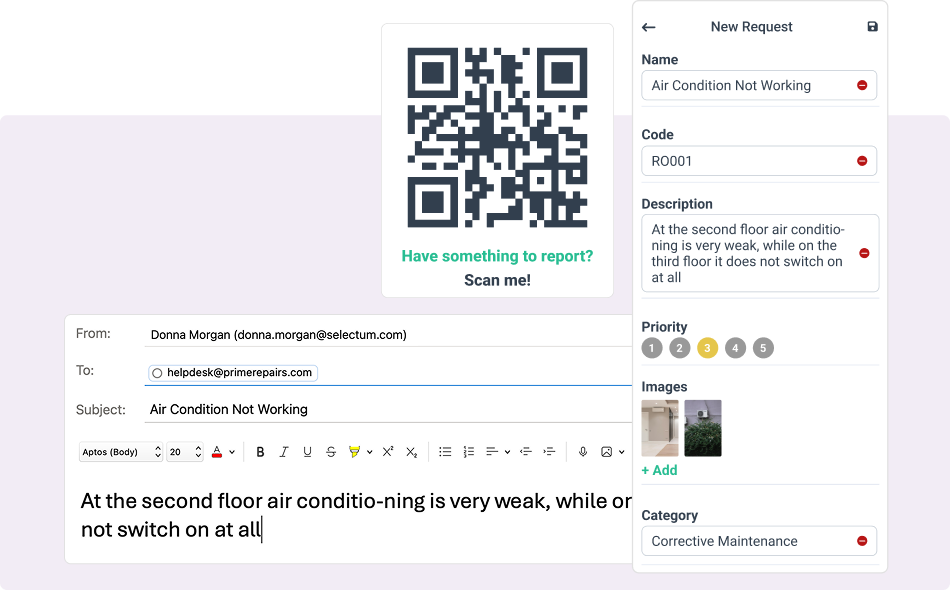
This eliminates the confusion of emails, phone calls, and paper forms while ensuring nothing falls through the cracks.
Mobile Accessibility
A maintenance platform with a mature mobile platform can help teams stay connected regardless of location. Field technicians can receive work orders, update task status, and communicate issues in real-time through mobile devices.
Automated Workflows
Implementing automated workflows as part of your CMMS system can ensure proper procedures are followed. For example, when equipment failure is reported, the system can automatically notify relevant personnel. It can also create work orders and trigger parts ordering, all of which can be done without manual intervention.
8. Data Management and Performance Tracking
Despite living in a data-rich era, many maintenance teams struggle to harness information effectively.
Maintenance organizations collect vast amounts of data about equipment performance, maintenance activities, and costs, yet 40% struggle with obtaining and analyzing asset data.
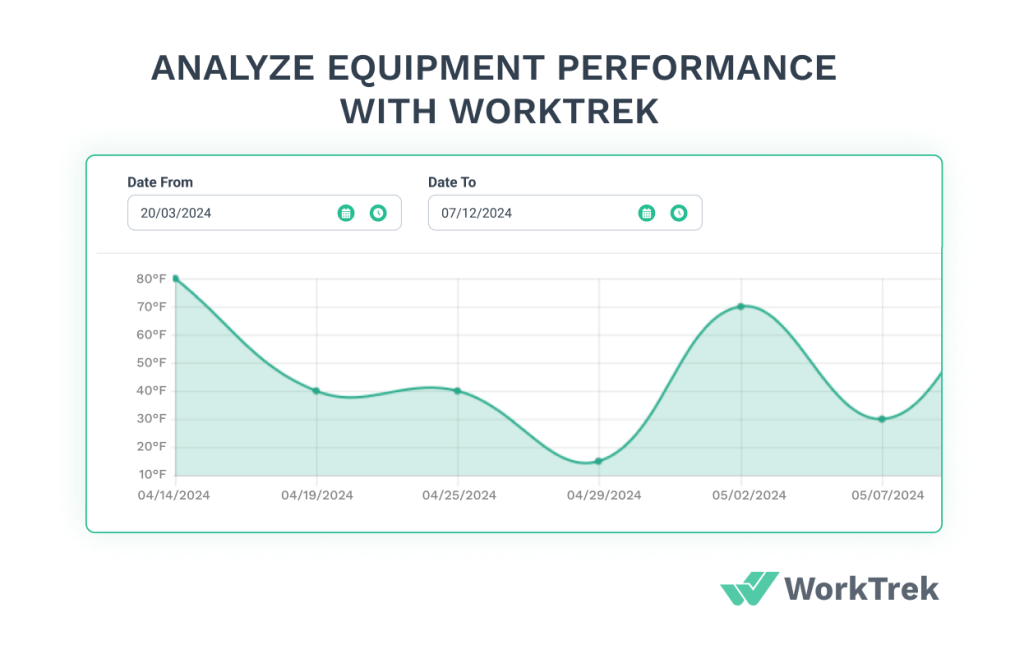
Without proper data analysis capabilities, maintenance managers make decisions based on intuition rather than facts, missing opportunities for continuous improvement.
The challenge goes beyond simple data collection. Many organizations have data scattered across multiple systems, spreadsheets, and paper records, making comprehensive analysis nearly impossible.
Even when data is digitized, a lack of standardization means comparing performance across assets or facilities becomes a manual, error-prone process.
Key performance indicators often go untracked or unmeasured, leaving maintenance managers unable to answer critical questions: Are we improving? Where should we focus resources? What’s our return on maintenance investment? Without these insights, it’s impossible to optimize maintenance strategies or justify budget requests with concrete evidence.
Here are a few steps you can follow to improve data management:
Standardized Data Collection
This enables consistency across all maintenance activities. Define what data to collect, how to collect it, and where to store it. Modern maintenance software can enforce these standards through required fields and automated data capture, eliminating the variability that makes analysis difficult.
Real-time Dashboards
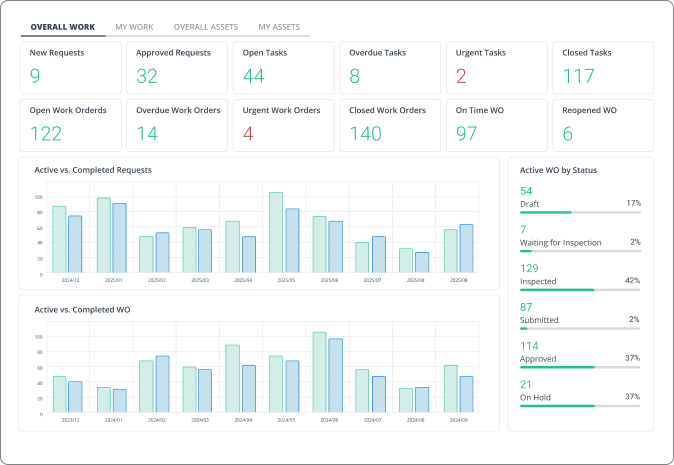
A good computerized maintenance management system can transform raw data into actionable insights. Instead of digging through reports, maintenance managers can see equipment availability, maintenance backlog, cost trends, and other key performance indicators at a glance.
These visual tools help identify problems quickly and track the effectiveness of improvement initiatives.
Predictive Analytics
Leverages historical maintenance data to forecast future needs. By analyzing patterns in equipment failures, maintenance costs, and resource utilization, organizations can optimize maintenance schedules, predict budget needs, and prevent failures before they occur. This data-driven approach transforms maintenance from reactive to strategic.
How WorkTrek CMMS Helps Organizations Overcome These Challenges
WorkTrek’s computerized maintenance management system directly addresses all eight maintenance management challenges through an integrated, user-friendly platform designed for modern maintenance teams.
By combining powerful functionality with intuitive design, WorkTrek transforms how organizations approach maintenance management.
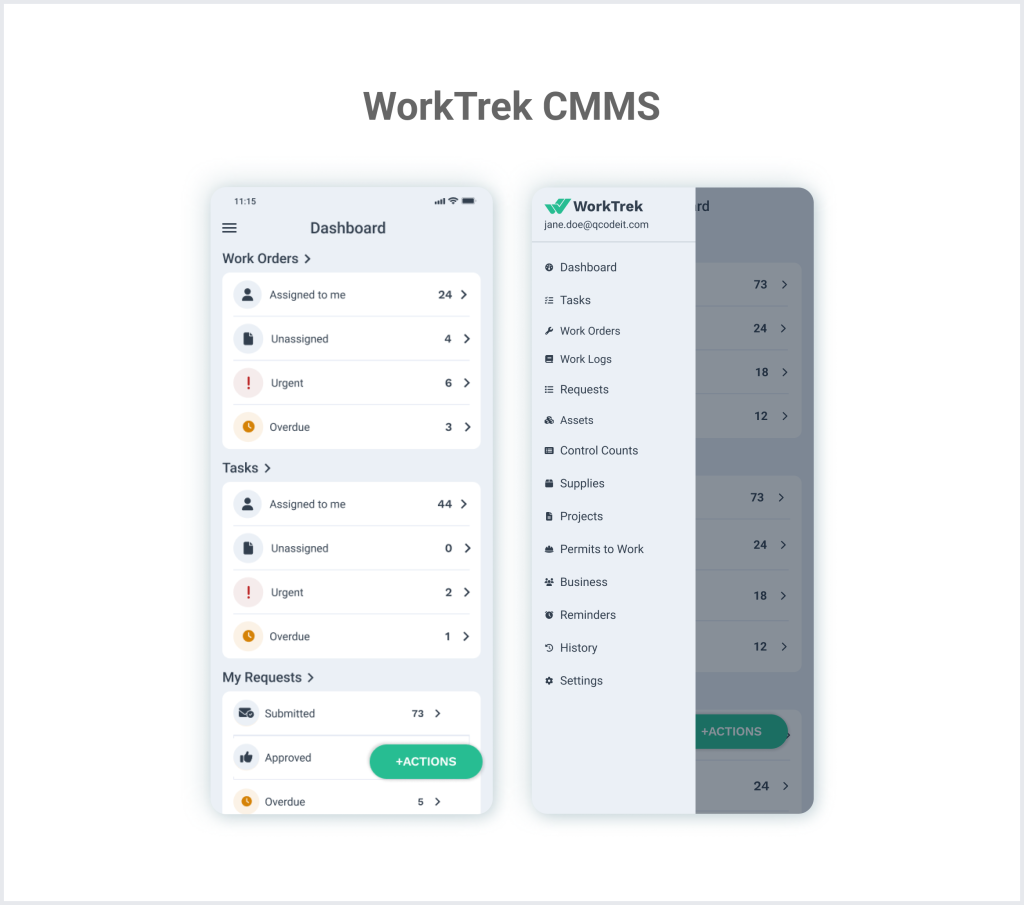
For aging equipment challenges, WorkTrek provides comprehensive asset management capabilities that track equipment lifecycle, maintenance history, and performance trends.
This data helps facility managers make informed decisions about repair versus replacement while maximizing asset lifespan through optimized preventive maintenance schedules.
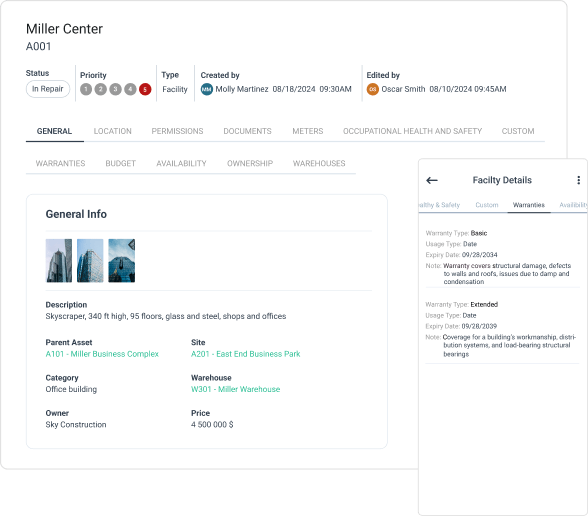
Addressing workforce challenges, WorkTrek includes built-in training tracking, skill management, and knowledge base features that help organizations maintain competency even as team composition changes. The system’s intuitive interface reduces training time for new technicians while standardized procedures ensure consistent quality regardless of who performs the work.
Budget optimization becomes achievable through WorkTrek’s detailed cost tracking and reporting capabilities. By capturing all maintenance-related expenses and demonstrating preventive maintenance ROI through clear metrics, maintenance managers can justify budgets and allocate resources more effectively.
The system’s predictive capabilities help prevent costly emergency repairs while optimizing inventory levels to reduce carrying costs.
WorkTrek’s mobile-first design ensures seamless communication between office and field personnel.
Work orders, updates, and critical information flow instantly between team members, eliminating communication gaps that lead to delays and errors. Integration capabilities mean WorkTrek works with existing systems rather than creating another silo.
Most importantly, WorkTrek transforms data from a burden to an asset. Automated data collection, real-time analytics, and customizable dashboards provide the insights maintenance teams need to improve continuously.
Whether tracking safety compliance, measuring performance against KPIs, or predicting future maintenance needs, WorkTrek ensures decisions are based on facts rather than guesswork.
Conclusion: Turning Challenges into Opportunities
The challenges facing maintenance management are real and significant, but they’re far from insurmountable. Organizations that acknowledge these obstacles and implement strategic solutions position themselves for operational excellence and competitive advantage.
Success requires more than just technology. It demands a commitment to continuous improvement, investment in people and processes, and a willingness to evolve from reactive to proactive maintenance practices.
By addressing these eight challenges systematically, maintenance teams can transform from cost centers to value drivers that directly contribute to organizational success.
The path forward is clear: embrace modern maintenance management approaches, invest in the right tools and training, and build a culture that values preventive over reactive maintenance. Organizations that make these investments today will reap the benefits of improved reliability, reduced costs, and enhanced operational efficiency for years to come.



